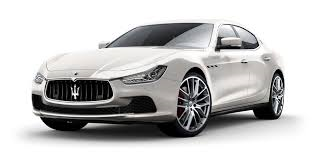The following types of vehicles (including four-wheel drive vehicles) are cars:

- motor cars, station wagons, panel vans and utilities (excluding panel vans and utilities designed to carry a load of one tonne or more);
- all other goods-carrying vehicles designed to carry less than one tonne; and
- all other passenger-carrying vehicles designed to carry fewer than nine occupants.
You make a car available for private use by an employee on any day that either:
- the car is actually used for private purposes by the employee; and
- the car is available for the private use of the employee.
A car is treated as being available for private use by an employee on any day that either:
- the car is not at your premises, and the employee is allowed to use it for private purposes; and
- the car is garaged at the employee's home.
A car that is garaged at an employee's home is treated as being available for the private use of the employee regardless of whether they have permission to use it for private purposes. Similarly, where the place of employment and residence are the same, the car is taken to be available for the private use of the employee.
You can calculate the taxable value of a car fringe benefit using either of the following methods:
- Statutory formula method – a single statutory rate of 20%, which applies regardless of kilometres travelled. This rate applies to all car fringe benefits after 10 May 2011, except where there is a 'pre-existing commitment' in place to provide the car. The taxable value of the car fringe benefits is the statutory rate multiplied by the car's base value.
- Operating cost method - the taxable value of the car fringe benefit is a percentage of the total costs of operating the car during the fringe benefits tax (FBT) year. The percentage varies with the extent of actual private use. The lower the incidence of actual private use, the lower the taxable value.
You must use the statutory formula method unless you elect to use the operating cost method. You may elect to use the operating cost method for any or all of your cars, regardless of which method you used in a previous year. However, to use the operating cost method you must have kept adequate FBT records. Log book and odometer records are kept when you use the operating cost method to calculate the taxable value of a car fringe benefit.
Log book records contain a record of business use and are usually maintained for a continuous 12-week period. Odometer records are a record of the total distance travelled during the same 12 weeks that log book records are maintained, and the total distance travelled each year. The 12-week period chosen should be representative of the car’s business use.
The ATO focus on situations where an employer-provided motor vehicle is used, or available, for private travel of employees. This constitutes a fringe benefit and needs to be declared in the fringe benefits tax return (if lodgement is required). There are circumstances where this may be exempt, such as where the entity was tax exempt or the private use of the vehicle was exempt. Some employers fail to identify or report these fringe benefits or incorrectly apply exemption provisions.

